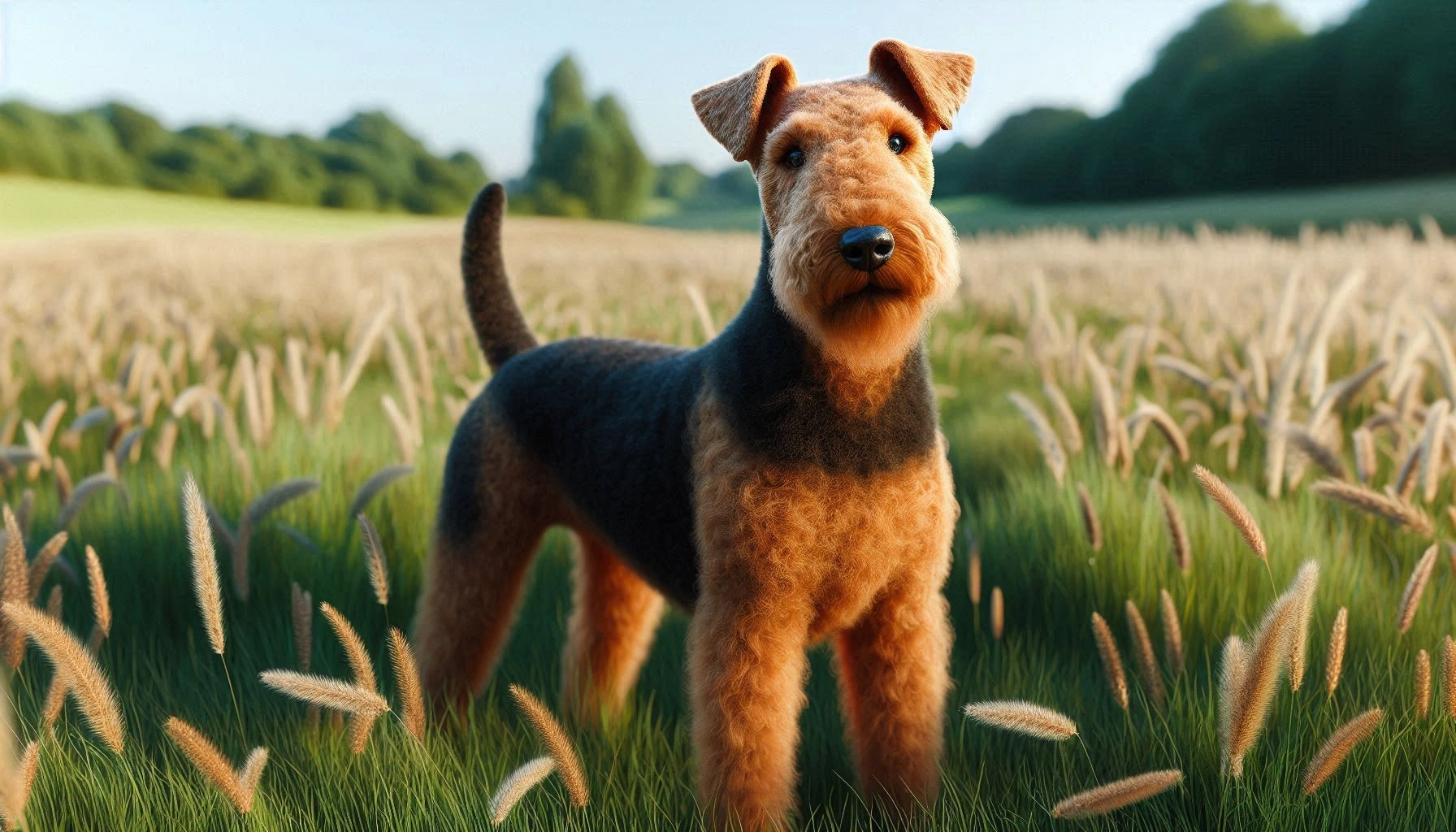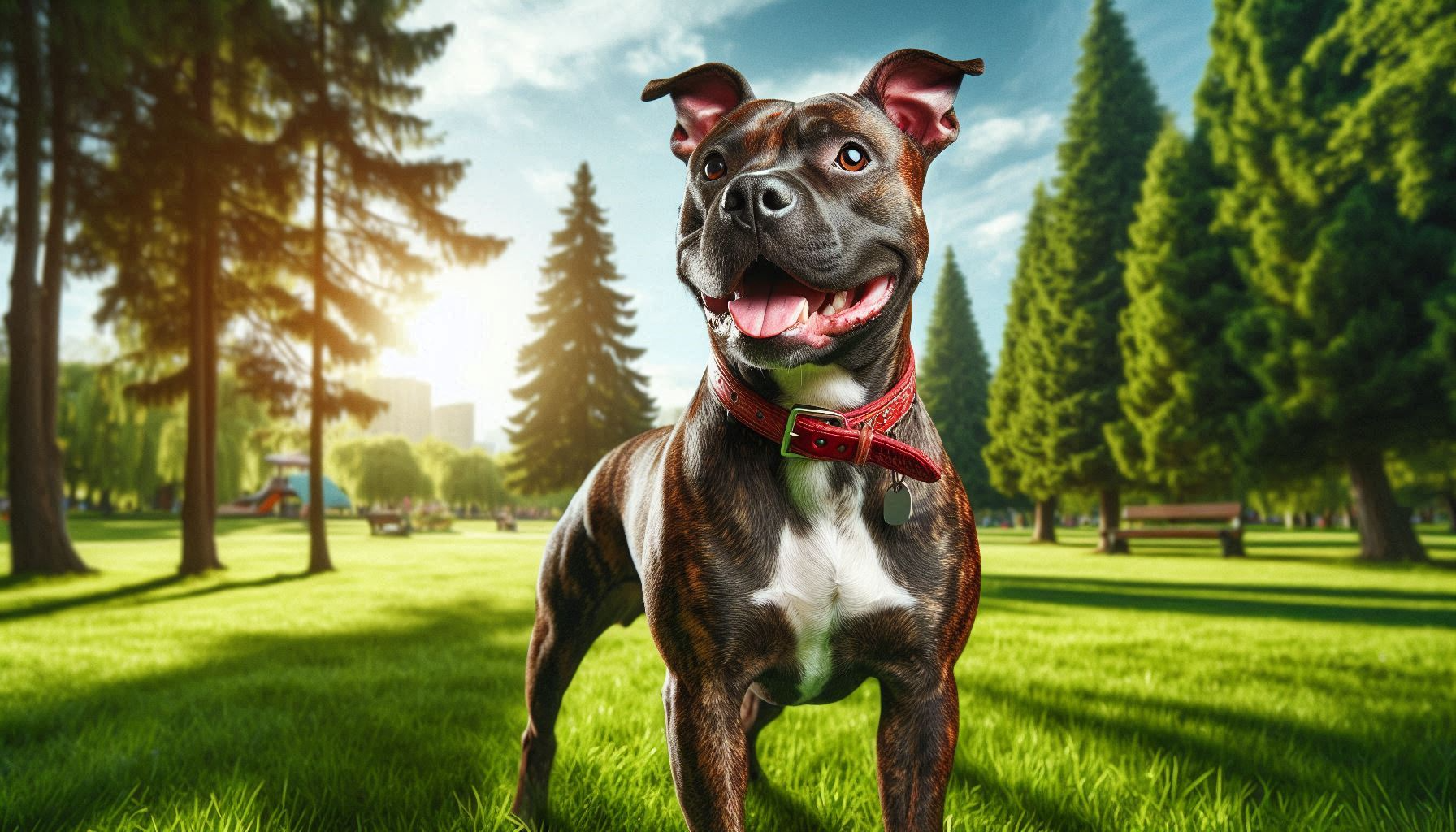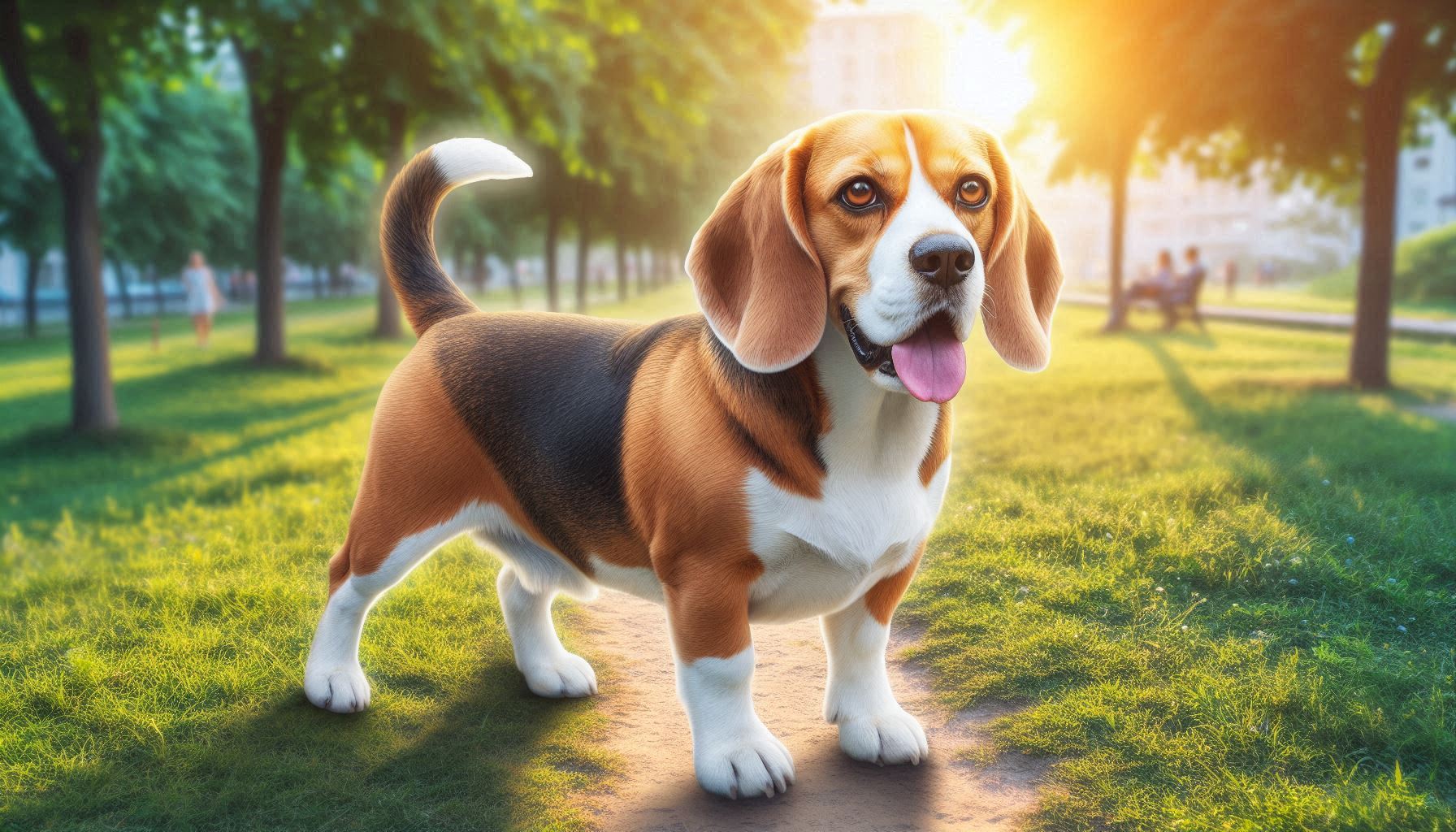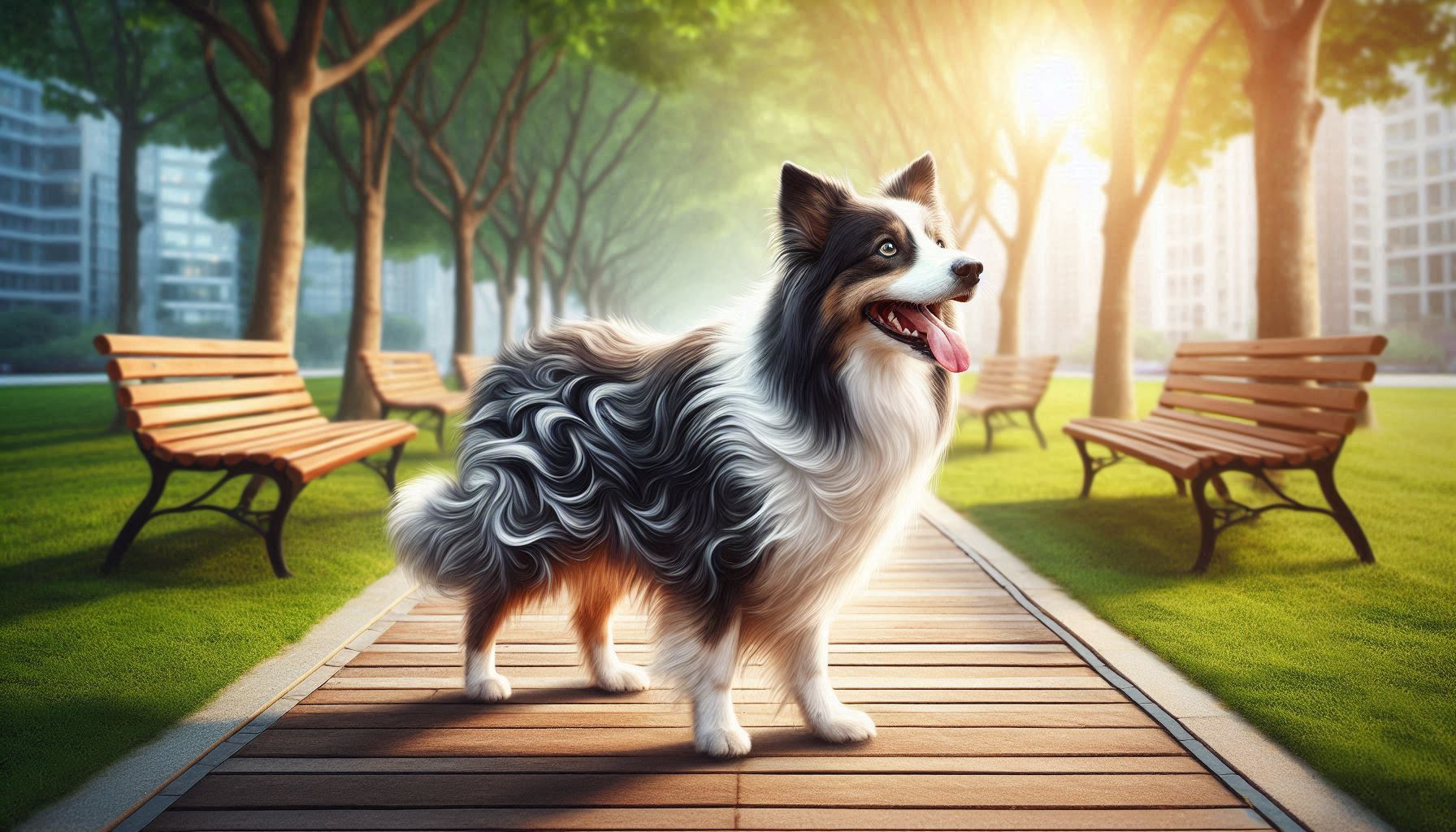Table of Contents
Deerhound Dog Breed
The Deerhound, also known as the Scottish Deerhound, is a majestic and noble dog breed that has captured the hearts of dog lovers around the world. Known for its graceful appearance and gentle temperament, the Deerhound is often referred to as the “Royal Dog of Scotland.” This breed, with its impressive history and unique physical characteristics, has become a popular choice among those who appreciate a dog that is both elegant and loyal. In this article, we’ll delve into the history, physical traits, temperament, and care requirements of the Deerhound, providing you with everything you need to know about this remarkable breed.
History and Origin

The Deerhound’s history is deeply rooted in Scottish culture, where it was originally bred as a hunting dog. This breed dates back to at least the Middle Ages, and some historians believe it may have existed even earlier, possibly as far back as ancient times. The primary purpose of the Deerhound was to hunt deer, hence its name, and it was highly valued by Scottish nobility for its ability to bring down large game.
During the medieval period, owning a Deerhound was a privilege reserved for royalty and the aristocracy. These dogs were often given as gifts to kings and queens, and they played a significant role in the hunting culture of the time. The breed’s close association with the Scottish nobility earned it the title of “Royal Dog of Scotland.”
Despite its royal status, the Deerhound faced challenges during the 18th and 19th centuries as hunting practices changed and other breeds gained popularity. However, dedicated breeders worked to preserve the Deerhound, and today it remains a cherished breed known for its grace and hunting prowess.
Physical Characteristics
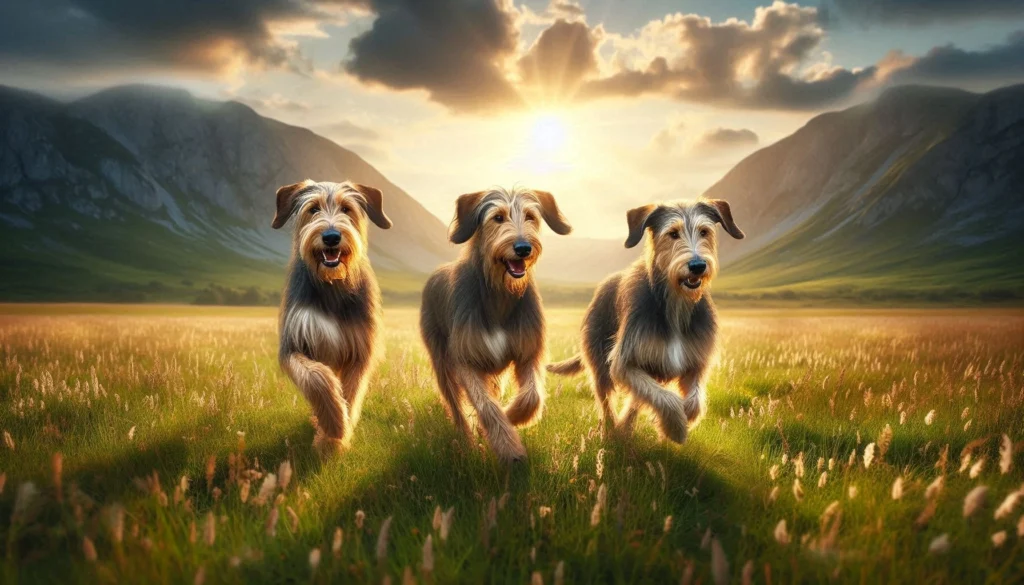
The Deerhound is a large and powerful breed, characterized by its tall, lean body and elegant appearance. Males typically stand between 30 to 32 inches tall at the shoulder, while females are slightly smaller, ranging from 28 to 30 inches. The breed’s weight can vary, with males weighing between 85 to 110 pounds and females between 75 to 95 pounds.
One of the most striking features of the Deerhound is its long, wiry coat, which provides protection from the harsh weather conditions of its native Scotland. The coat is typically rough to the touch and comes in various shades of gray, blue-gray, brindle, or fawn. The breed’s coat may have a slight curl, particularly around the neck and back.
The Deerhound’s head is long and narrow, with a strong muzzle and dark, expressive eyes that convey intelligence and gentleness. The ears are small and folded back, giving the breed a dignified and noble appearance. The Deerhound’s tail is long and slightly curved, adding to its graceful silhouette.
Temperament and Personality
The Deerhound is often described as a gentle giant, known for its calm and affectionate nature. This breed is incredibly loyal to its family and forms strong bonds with its human companions. Despite its size and history as a hunting dog, the Deerhound is not aggressive and is generally very good-natured.
When it comes to interactions with people, the Deerhound is typically reserved but friendly. It is not known for being overly exuberant or demanding of attention, preferring instead to quietly stay by its owner’s side. This breed is also known for being patient and gentle with children, making it a good choice for families with young kids.
In terms of interaction with other animals, the Deerhound can coexist peacefully with other dogs, especially if they are raised together. However, due to its strong prey drive, caution should be exercised when introducing a Deerhound to smaller pets, such as cats or rabbits. Proper socialization from an early age can help mitigate potential issues with other animals.
Health and Lifespan
The Deerhound is generally a healthy breed, but like all dogs, it is prone to certain health issues. Understanding these potential health concerns and taking preventive measures can help ensure a long and healthy life for your Deerhound.
Common Health Issues
- Gastric Dilatation-Volvulus (GDV): Also known as bloat, GDV is a serious condition that affects deep-chested breeds like the Deerhound. It occurs when the stomach twists, trapping gas and causing the stomach to expand. This condition requires immediate veterinary attention.
- Cardiomyopathy: This heart condition, which affects the heart muscle’s ability to pump blood effectively, is another concern for Deerhounds. Regular veterinary check-ups and monitoring are important for early detection.
- Osteosarcoma: Bone cancer is more common in large breeds, including the Deerhound. While it is a serious condition, early diagnosis and treatment can improve the dog’s quality of life.
- Hypothyroidism: This condition, where the thyroid gland does not produce enough hormones, can lead to weight gain, lethargy, and skin problems. It is usually managed with medication.
Lifespan
The average lifespan of a Deerhound is between 8 and 11 years. While this is somewhat shorter than that of smaller breeds, proper care, regular veterinary visits, and a healthy lifestyle can help extend your Deerhound’s life.
Care and Grooming

Caring for a Deerhound involves regular grooming, exercise, and attention to its dietary needs. Here’s a detailed look at what’s required:
Grooming
The Deerhound’s wiry coat requires regular grooming to keep it looking its best. Here are some grooming tips:
- Brushing: The coat should be brushed once or twice a week to remove loose hair and prevent matting. A slicker brush or a comb designed for rough coats is ideal for this task.
- Bathing: Deerhounds do not need frequent baths; once every few months is usually sufficient unless they get particularly dirty.
- Nail Trimming: Regular nail trimming is important, especially for a large breed like the Deerhound. Long nails can cause discomfort and affect the dog’s gait.
- Ear Care: The Deerhound’s ears should be checked regularly for signs of infection or wax buildup. Clean the ears as needed with a vet-recommended ear cleaner.
Exercise
The Deerhound is an active breed that requires regular exercise to stay healthy and happy. While they enjoy running and playing, they are also known for their laid-back nature when indoors. Here are some exercise tips:
- Daily Walks: Deerhounds should be taken on daily walks, preferably in a safe, enclosed area where they can run freely.
- Off-Leash Play: Due to their strong prey drive, it’s best to allow Deerhounds off-leash only in secure, fenced areas. They enjoy running and need space to stretch their legs.
- Mental Stimulation: In addition to physical exercise, Deerhounds benefit from mental stimulation through training, puzzle toys, and interactive games.
Dietary Recommendations
Feeding a Deerhound a balanced diet is essential for maintaining its health. High quality commercial dog food that meets the breed’s nutritional needs is generally recommended. Here are some dietary tips:
- Portion Control: Monitor portion sizes to prevent obesity, which can exacerbate health issues like GDV.
- Regular Meals: It’s best to feed Deerhounds two smaller meals a day rather than one large meal to reduce the risk of bloat.
- Fresh Water: Ensure your Deerhound has access to fresh water at all times.
Training and Socialization
Training a Deerhound can be a rewarding experience, but it requires patience and consistency. While this breed is intelligent and eager to please, it also has an independent streak that can make training a challenge.
Training Tips
- Positive Reinforcement: Use positive reinforcement techniques, such as treats, praise, and play, to motivate your Deerhound during training sessions.
- Consistency: Be consistent in your commands and expectations. Deerhounds respond well to clear and consistent training routines.
- Patience: Training should be approached with patience and understanding. Avoid harsh corrections, as they can cause the dog to become fearful or uncooperative.
Socialization
Socializing your Deerhound from an early age is crucial to ensure it becomes a well adjusted adult. Here are some socialization tips:
- Expose to Various Environments: Take your Deerhound to different environments, such as parks, city streets, and quiet countryside areas, to help it become accustomed to various sights, sounds, and smells.
- Interaction with Other Animals: Gradually introduce your Deerhound to other dogs and animals to reduce the likelihood of aggressive or fearful behavior.
- Positive Experiences: Ensure that socialization experiences are positive and enjoyable for your Deerhound to build confidence.
Suitability as a Family Pet

The Deerhound is an excellent choice for families who appreciate a gentle, loyal, and low maintenance dog. However, due to its size and exercise needs, there are some considerations to keep in mind.
Living Environment
Deerhounds are best suited to homes with plenty of space, such as houses with large yards. While they can adapt to apartment living, they need regular access to outdoor areas where they can run and play. Their laid-back nature indoors makes them suitable for families who enjoy a relaxed lifestyle.
Energy Levels
Despite their size, Deerhounds are known for their calm demeanor indoors. They enjoy lounging around the house and are not overly demanding in terms of exercise. However, they do need regular outdoor activities to stay healthy and prevent boredom.
Fun Facts and Trivia
- Ancient Breed: The Deerhound is one of the oldest dog breeds, with a history that may date back to ancient times.
- Noble Associations: Deerhounds were once so highly valued that they were considered the exclusive property of Scottish nobility.
- Fast Runners: Despite their size, Deerhounds are incredibly fast and were originally bred for speed to catch deer.
Similar to Deerhound
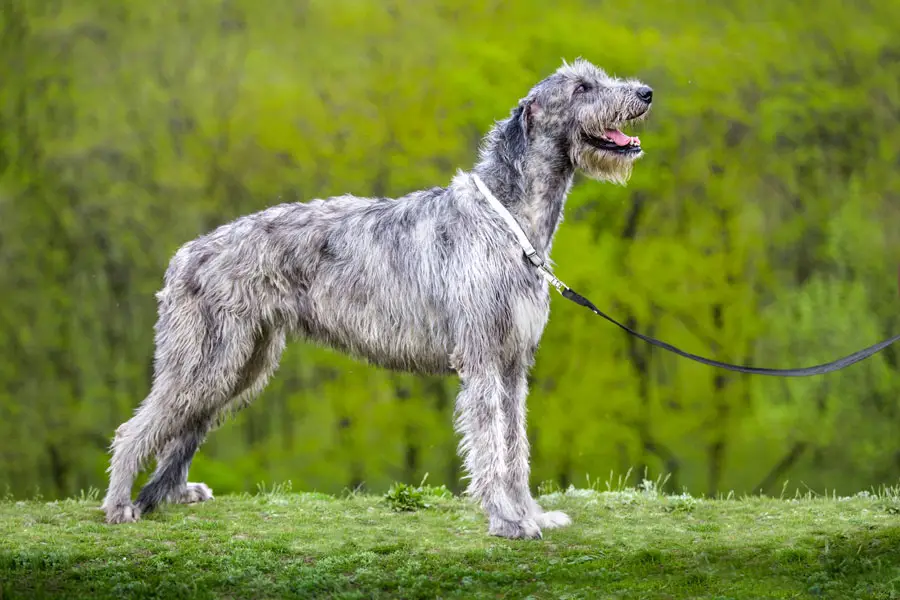
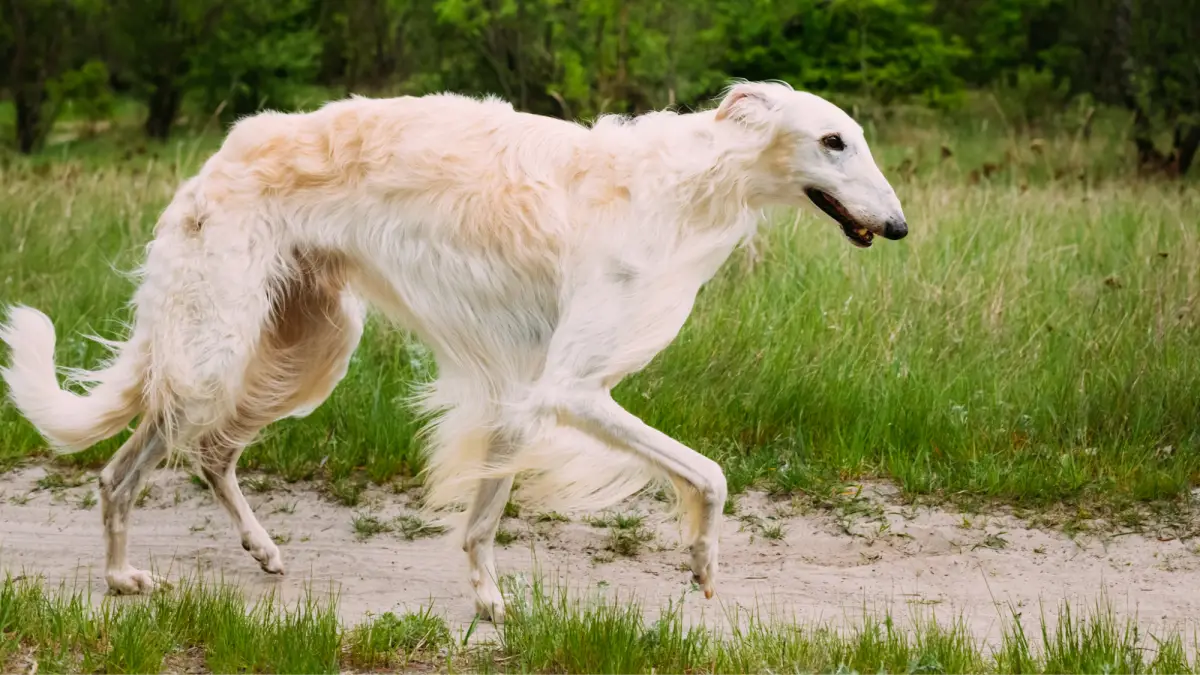
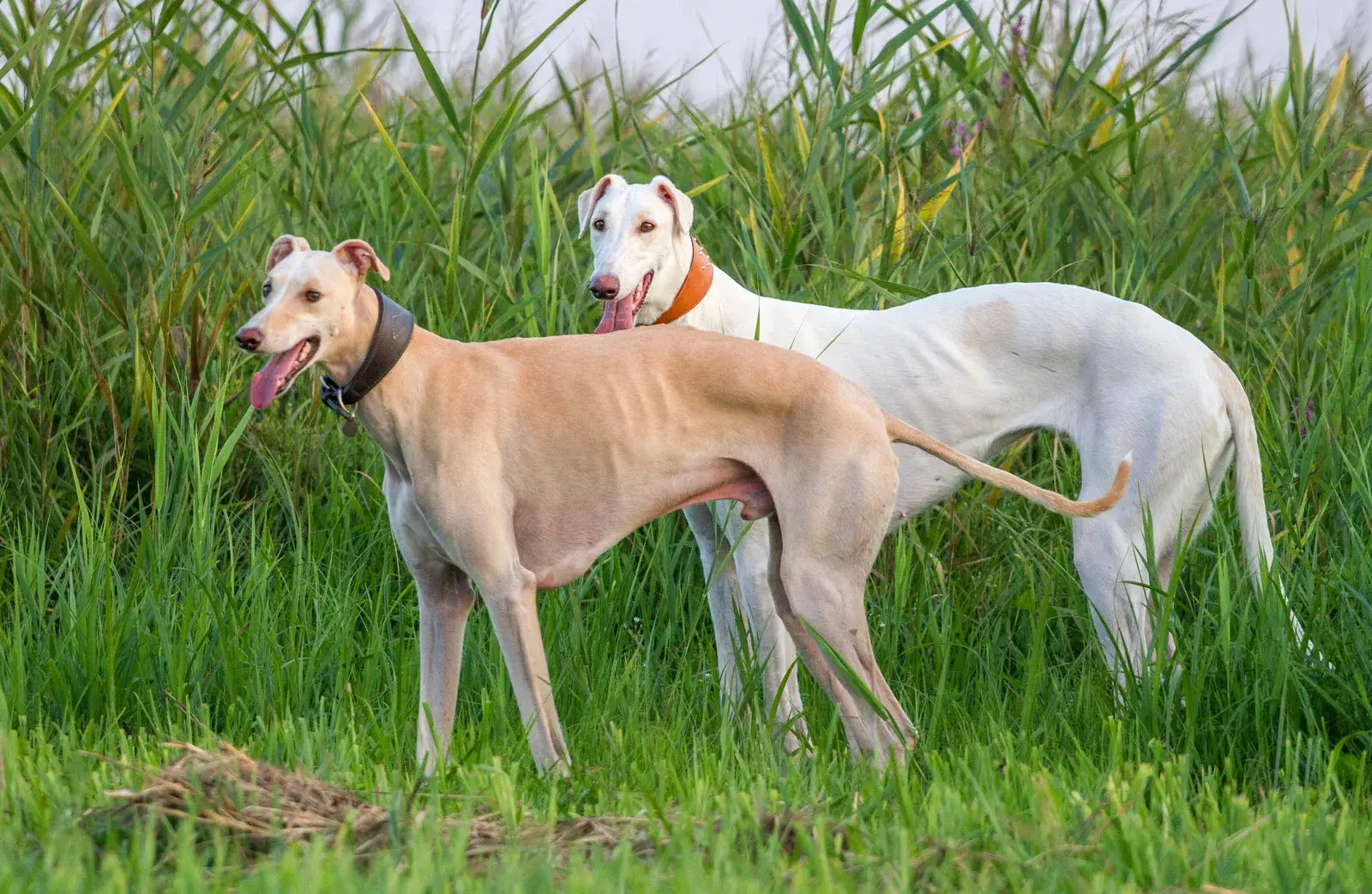
1. Irish Wolfhound
The Irish Wolfhound is another large, ancient breed with a history of hunting large game. Like the Deerhound, the Irish Wolfhound is gentle, loyal, and known for its calm demeanor. However, it is even larger, standing as one of the tallest dog breeds in the world.
2. Borzoi
The Borzoi, also known as the Russian Wolfhound, shares the Deerhound’s elegant appearance and gentle temperament. Originally bred for hunting wolves in Russia, the Borzoi is a graceful and dignified breed that also requires regular exercise and grooming.
3. Greyhound
The Greyhound is a sighthound like the Deerhound, known for its incredible speed and slender build. While Greyhounds are smaller than Deerhounds, they share a similar gentle and calm personality, making them excellent companions for the right family.
Conclusion
The Deerhound is a breed that embodies grace, loyalty, and a rich historical heritage. While it may not be the right fit for every household due to its size and exercise needs, those who choose to bring a Deerhound into their home will be rewarded with a gentle and devoted companion. Whether you’re drawn to its noble history, its elegant appearance, or its calm and affectionate nature, the Deerhound is a breed that offers a unique and fulfilling relationship.
FAQs
Is the Deerhound a dangerous dog?
No, the Deerhound is not a dangerous dog. It is known for its gentle and calm temperament. While it has a strong prey drive due to its hunting background, it is not aggressive towards people and is typically very friendly and affectionate.
Is the Deerhound a good guard dog?
The Deerhound is not an ideal guard dog. While it is large and imposing in appearance, it is generally too gentle and friendly to serve as an effective guard dog. Deerhounds are more likely to greet strangers with curiosity rather than aggression.
